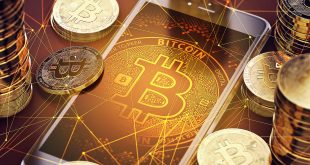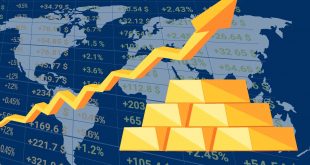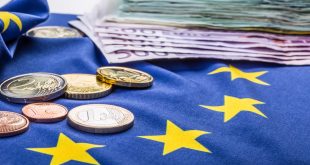Recent remarks from Federal Reserve officials highlight a growing sense of caution and complexity as they grapple with the potential economic fallout from proposed tariffs, alongside broader monetary policy challenges. The remarks, made in early April 2025, reflect a central bank navigating uncharted waters, with tariffs posing risks to inflation, growth, and the Fed’s ability to maintain economic stability. Here’s a collective look at their perspectives, drawing from their public statements.
Tariffs as an Economic Wildcard
The possibility of new tariffs, particularly associated with incoming policy shifts, has emerged as a focal point for Fed officials. Michelle Bowman, a Federal Reserve Governor, emphasized that the impact of tariffs remains murky. Speaking on April 10, 2025, she noted that while tariffs could disrupt supply chains and raise costs, the extent of their effects depends on specifics that are yet to be clarified—such as scope, scale, and implementation timelines. Her measured tone underscores a wait-and-see approach, acknowledging potential risks without jumping to conclusions.
In contrast, Chicago Fed President Austan Goolsbee took a more pointed stance, describing tariffs as akin to a “stagflationary shock.” In remarks reported on the same day, he warned that tariffs could simultaneously drive up prices and slow economic growth—a toxic combination that complicates the Fed’s dual mandate of price stability and maximum employment. Goolsbee’s framing highlights the challenge of responding to external policy shocks that could push inflation higher while stifling demand, leaving the Fed with limited tools to balance the fallout.
Kansas City Fed President Jeffrey Schmid echoed concerns about uncertainty, noting that recent tariff announcements have already dented economic sentiment. He pointed to rising short-term inflation expectations and falling business confidence as early warning signs, suggesting that even the anticipation of tariffs is enough to rattle markets and decision-makers. Schmid’s comments reflect a broader anxiety about how policy unpredictability could amplify economic volatility.
Inflation Risks and the Fed’s Tightrope
Beyond tariffs, Fed officials are also contending with a broader inflationary landscape that’s grown more precarious. An unnamed U.S. Fed official, cited in a Barron’s report on April 10, 2025, warned of a “marked increase in inflation risks.” This sentiment aligns with Schmid’s observation of climbing short-term inflation expectations, suggesting that the Fed is on high alert for signs of price pressures reaccelerating. The official’s warning points to a delicate balancing act: tightening policy too aggressively could choke growth, while staying too loose risks entrenching inflation.
Goolsbee’s stagflation warning adds another layer of complexity. If tariffs do trigger price spikes while slowing the economy, the Fed might face a scenario where traditional tools—like interest rate hikes—could exacerbate the slowdown without fully taming inflation. This dilemma underscores why officials are so focused on gathering more data before committing to a clear path.
No Playbook for What’s Ahead
Adding to the Fed’s challenges is the lack of precedent for navigating tariff-driven disruptions in today’s globalized economy. One Fed official candidly admitted, “There is no playbook for how to respond to Trump’s tariffs.” This acknowledgment reflects the unique nature of the current moment: unlike past trade disputes, today’s tariff proposals come amid already elevated inflation, a recovering labor market, and a Fed still unwinding its massive balance sheet. The absence of a clear roadmap leaves officials leaning heavily on flexibility and vigilance.
The Fed’s recent minutes, released on April 9, 2025, and covered by Reuters, offer a glimpse into internal deliberations. While much of the discussion focused on slowing the balance sheet runoff—a technical move to reduce the Fed’s bond holdings—there was also debate about how external shocks, like tariffs, might complicate the broader policy outlook. The minutes suggest a central bank bracing for turbulence, with some officials advocating for a cautious approach to avoid overreacting to short-term disruptions.
Piecing It Together
Taken together, these remarks paint a picture of a Federal Reserve on edge but striving to maintain composure. Bowman’s call for clarity, Goolsbee’s stagflation warning, Schmid’s focus on uncertainty, and broader concerns about inflation risks all point to a central bank grappling with an unusually complex set of challenges. The lack of a clear playbook, as one official noted, means the Fed must rely on real-time data and adaptability to steer the economy through potential turbulence.
For now, Fed officials seem united in their emphasis on monitoring developments closely. Tariffs, if implemented, could reshape the economic landscape in ways that are hard to predict—potentially raising costs for consumers, disrupting global trade, and forcing the Fed into tough choices. Yet the diversity of perspectives among officials also highlights a healthy debate within the institution, as they weigh the risks of inflation against the need to support growth.
As the Fed navigates this uncertainty, one thing is clear: the road ahead will require careful judgment and a willingness to pivot as new information emerges. For businesses, investors, and everyday Americans, the Fed’s cautious tone serves as a reminder that economic stability hinges on policies—both monetary and fiscal—that are still very much in flux.

 Noor Trends News, Technical Analysis, Educational Tools and Recommendations
Noor Trends News, Technical Analysis, Educational Tools and Recommendations




